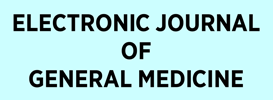Current issue
Archive
About the Journal
About us
Aims and Scope
Indexing and Abstracting
Editorial Office
Open Access Policy
Publication Ethics
Contact
For Authors
Editorial Policy
Peer Review Policy
Manuscript Preparation Guidelines
Copyright & Licensing
Publication Fees
Fast-Track Paper Publication Option
Conflict Interest Guidance
Submit an Article
Special Issues
News & Editorials
“Fake,” “Predatory,” and “Pseudo” Journals: Charlatans Threatening Trust in Science
Shifting the Journal submission-review system to the Editorial System Manuscript December 27, 2017.
ORIGINAL ARTICLE
Importance of Reciprocal ST Segment
Depression in the Extensive
Coronary Artery Disease
1
Van High Specialty Education and
Research Hospital, Department of
Cardiology, Van, Turkey
2
Sivas Numune Hospital, Department of
Cardiovascular Surgery, Sivas, Turkey
3
Çorum State Hospital, Department of
Cardiology, Çorum, Turkey
4
Şanlıurfa Education and Research
Hospital, Department of Cardiology,
Şanlıurfa, Turkey
5
Siverek State Hospital, Department of
Cardiology, Şanlıurfa, Turkey
6
Kartal Koşuyolu High Specialty Education
and Research Hospital, Department
of Cardiology, Istanbul, Turkey
7
Cumhuriyet University, Faculty of
Medicine, Department of Cardiology,
Sivas, Turkey
Publication date: 2010-01-12
Corresponding author
Hekim Karapınar
Van High Specialty Education and Research Hospital, Department of Cardiology, Van, Turkey
Van High Specialty Education and Research Hospital, Department of Cardiology, Van, Turkey
Eur J Gen Med 2010;7(1):88-91
KEYWORDS
ABSTRACT
Aim: We investigated the relationship between the severity of
reciprocal ST depression and the extent of coronary artery disease
in patients with inferior myocardial infarction.
Method: Ninety-five consecutive patients (52 women 43 men, with a
mean age of 54±5 years) who had acute inferior myocardial infarction
were included in the study. Reciprocal changes in the ST segment were
defined as ST depression of >1 mm in at least two out of four of
the precordial leads V1–V4. All the patients had undergone coronary
angiography within seven days of admission. The extension of coronary
artery disease which was measured by Gensini and Reardon scores,
was compared with the reciprocal changes on ECG recorded at the
time of admission.
Result: There was a significant correlation between reciprocal ST
depression and disease extension (r=0.68 for Gensini score, r= 0.88
for Reardon score, p<0.05 for both).
Conclusion: The presence of ST segment depression in the
precordial leads during the acute inferior myocardial infarction
was associated with greater myocardial necrosis and more frequent
left coronary artery disease.
Share
RELATED ARTICLE
We process personal data collected when visiting the website. The function of obtaining information about users and their behavior is carried out by voluntarily entered information in forms and saving cookies in end devices. Data, including cookies, are used to provide services, improve the user experience and to analyze the traffic in accordance with the Privacy policy. Data are also collected and processed by Google Analytics tool (more).
You can change cookies settings in your browser. Restricted use of cookies in the browser configuration may affect some functionalities of the website.
You can change cookies settings in your browser. Restricted use of cookies in the browser configuration may affect some functionalities of the website.

